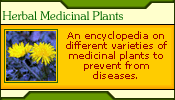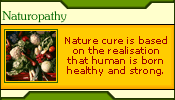|
The human body is composed of various organs and parts, which are
made up of tissues and cells. These tissues and cells are composed
of 16 chemical elements.
The balance or equilibrium of these chemical elements in the body
is an essential factor in the maintenance of health and healing
of disease. The acid-alkaline balance plays a vital role in this
balanced body chemistry. All foods, after digestion and absorption
leave either an acid or alkaline ash in the body depending on their
mineral composition. The normal body chemistry is approximately
20 per cent acid and 80 per cent alkaline. This is the acid-alkaline
balance.
In normal health, the reaction of the blood is alkaline and that
is essential for our physical and mental well-being. The preponderance
of alkalis in the blood is due to the fact that the products of
the vital combustions taking place in the body are mostly acid in
character. Carbohydrates and fats form about nine-tenths of the
normal fuel of the body. IN normal health, this great mass of material
is converted into carbon dioxide gas and water. Half of the remaining
one-tenth fuel is also converted into the same gas and water. The
blood to the various points of discharge, mainly the lungs, transports
this huge amount of acid. By virtue of alkalinity, the blood is
able to transport the acid from the tissues to the discharge points.
Virtually all degenerative conditions involve some degree of acidity
in the body. Cancer and many pathogenic disease-causing organisms
cannot exist in an alkaline environment. Each of our tissues and
body fluids has an optimum p.H. range that is unique. When one of
our tissues or fluids is too acidic, our body will try to adjust
- sometimes compensating by making another tissue or fluid overly
alkaline.
In order to correct over acidity, the body must borrow minerals-including
calcium, sodium, potassium and magnesium-from vital organs and bones
to buffer (neutralize) the acidic condition. Over time, this drain
on the body's mineral stores can cause severe mineral imbalances
that dramatically affect many essential physiological functions.
Health challenges associated with chronically-acid body states include
low blood pressure, insomnia, water retention, headaches, fatigue,
eczema, immune deficiency, joint and muscle pain, premature aging,
obesity, and in severe cases, kidney disease, cardiovascular illness,
osteoporosis, and cancer.
Generally speaking, an immune-boosting, yeast-starving diet is
quite alkalizing. By doing a search on the internet, you'll find
plenty of food charts to help you examine the acid/alkaline theory
in more detail. Be aware that as with almost any field of nutrition,
you can expect to find a level of disagreement out there.
There is some controversy on the classification of certain foods
as acid-producing or alkaline-producing because some foods can have
both an alkalizing and acidifying effect. Cranberry for example,
is an acidic fruit. It is said to acidify the urine but alkalize
the tissues. This kind of duplicity is not that uncommon and serves
to complicate the classification of foods.
When it comes to the adaptation of our diet with optimum pH in
mind, there is some consensus that most health problems stem from
general over-acidity. We also know that a diet of meats, cheeses,
mucous-producing foods, starches, sugar and coffee produce symptoms
of over-acidity. A diet of primarily whole foods, vegetables and
beans is less likely to produce these conditions.
|


















